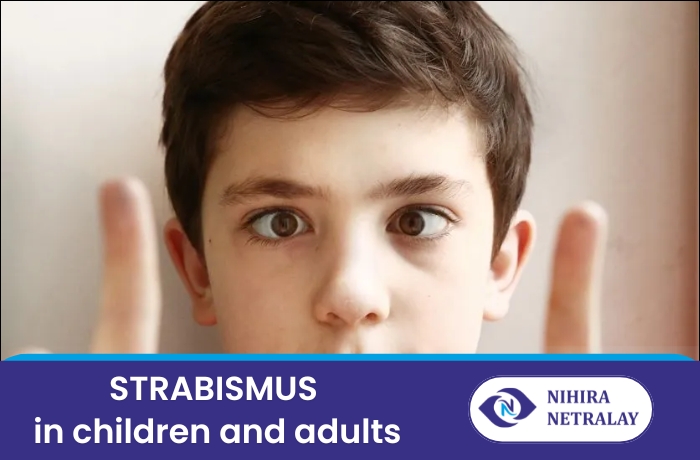Strabismus, more commonly known as crossed eyes or squint, is a condition where the eyes do not properly align with each other when looking at an object. One eye may turn in, out, up, or down while the other eye looks straight ahead. This misalignment can be constant or intermittent and affects both children and adults.
If left untreated, strabismus can lead to amblyopia (lazy eye) and permanent vision loss in children, while in adults, it often causes double vision (diplopia) and significant social and functional discomfort. The good news is that effective treatment options are available for all ages. The goal is to align the eyes, restore binocular vision, and preserve sight.
Why Treatment is Crucial
In children, the brain is still developing its visual pathways. To avoid seeing double, the brain may start to ignore the input from the misaligned eye. This leads to amblyopia, where the eye’s vision fails to develop normally, even with glasses. Early intervention is critical to prevent this permanent vision loss.
Adults with new-onset strabismus don’t risk amblyopia, as their visual system is mature. However, they often experience debilitating double vision, depth perception issues, eyestrain, and headaches, which can impact daily activities like driving and reading.
Comprehensive Treatment Options
The chosen treatment path depends on the type and severity of strabismus, the patient’s age, and the underlying cause. A comprehensive eye exam is the essential first step.
1. Non-Surgical Treatments:
-
Glasses or Contact Lenses: The simplest and first line of defense for many patients. Correcting refractive errors like farsightedness can sometimes fully correct the eye turn, especially in cases of accommodative esotropia.
-
Prism Lenses: Special lenses that bend light entering the eye. They can help reduce double vision in adults and small misalignments by making it easier for the eyes to work together.
-
Vision Therapy (Orthoptics): A structured program of eye exercises designed to improve eye coordination, focus, and brain-eye communication. It can help control eye turns, improve depth perception, and treat convergence insufficiency (a type of exophoria).
-
Patching or Atropine Drops: Used primarily in children to treat amblyopia. By blurring the vision in the stronger eye with drops or covering it with a patch, the brain is forced to use the weaker (amblyopic) eye, strengthening its visual connection.
2. Surgical Treatment:
-
Strabismus Surgery: This is often recommended when non-surgical methods are insufficient. The procedure involves adjusting the tension of the muscles that control eye movement. The surgeon will weaken, strengthen, or reposition certain eye muscles to achieve better alignment. It is a common and highly successful procedure.
-
Adjustable Suture Surgery: A technique sometimes used in older cooperative patients and adults where the fine adjustment of the muscle suture can be done after the surgery, allowing for incredibly precise alignment.
A Message of Hope
Whether you are a parent concerned about your child’s developing vision or an adult struggling with the sudden onset of double vision, know that strabismus is a treatable condition. Seeking expert care is the most important step toward achieving comfortable, single, and clear vision.
Seeking Expert Care in Navi Mumbai?
Successful strabismus management requires a precise diagnosis and a tailored treatment plan from a specialist with expertise in binocular vision disorders.
Consult Dr. Ankita Patil is a renowned Pediatric Eye Specialist in Navi Mumabi and squint expert. She offers comprehensive care for both children and adults with strabismus.
If you are looking for the best eye doctor for squint treatment, scheduling a consultation with Dr. Ankita Patil is a proactive step towards clearer, healthier vision.

